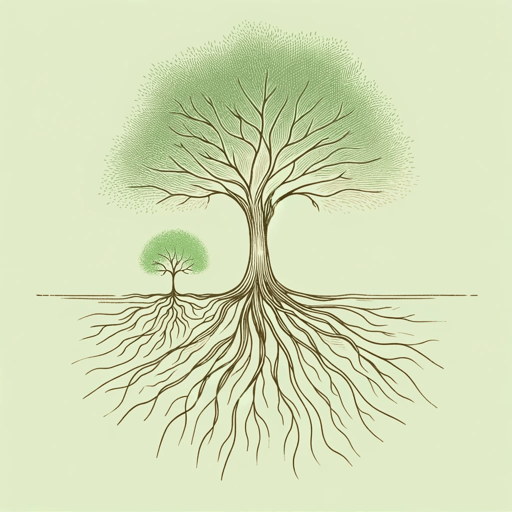64 pages • 2 hours read
Trevor NoahIt's Trevor Noah: Born a Crime: Stories from a South African Childhood
Nonfiction | Autobiography / Memoir | Middle Grade | Published in 2019A modern alternative to SparkNotes and CliffsNotes, SuperSummary offers high-quality Study Guides with detailed chapter summaries and analysis of major themes, characters, and more.
Summary and Study Guide
Overview
It’s Trevor Noah: Born a Crime: Stories from a South African Childhood is Trevor Noah’s 2019 young reader’s adaptation of his 2016 memoir Born a Crime: Stories from a South African Childhood. Noah is a comedian, writer, producer, and political commentator. While he rose to fame in South Africa in the 2000s, he became more well-known in the United States in 2015 after he took over Jon Stewart’s hosting duties on the popular late-night comedy news show The Daily Show. Noah has filmed many stand-up specials and hosted the Grammy Awards several times, as well as the 2022 White House Correspondent’s Dinner. Noah was born in 1984 in Johannesburg, South Africa, to a Black Xhosa mother, Patricia, and a white Swiss German father, Robert. He was born roughly 10 years before the end of apartheid, the violent system of institutional racism, racial segregation, and disenfranchisement in South Africa under the minority white Afrikaner government. The memoir’s title phrase “born a crime” refers to the fact that sexual or romantic relationships between people of different races were criminalized under apartheid. Noah’s birth was therefore a violation of South African law.
His memoir retells moments from his childhood and young adulthood, as a “mixed” (21) child in a Black family under apartheid. Each chapter of his memoir tells one extended anecdote, or a series of related anecdotes, with a lesson at the end. Though his anecdotes are humorous, they often deal with trauma and the harsh realities of the racist systems he grew up in and around. This young reader’s adaptation retains the original memoir’s difficult and serious themes, like racial trauma, crises of identity, and domestic violence. The most notable alterations are small changes to the language to make it suitable for elementary and middle-grade readers. As one example, Noah replaces the word “shit” in his original memoir with “poop” in this young reader’s adaptation.
It’s Trevor Noah: Born a Crime: Stories from a South African Childhood was a New York Times bestseller. The original version of Noah’s memoir won many awards, including a Zora Neale Hurston Award, two NAACP Image Awards, and an Audie Award for Best Male Narrator.
This guide refers to the 2019 Delacorte Press hardcover edition.
Content Warning: The source text contains descriptions of racial violence, police violence, domestic violence, and racism. It contains graphic descriptions of gun violence, which the guide discusses. Apartheid imposed a system of racial categorization on its citizens. When discussing racial terms, this guide replicates Noah’s intended usage and meaning. For instance, Noah discusses the South African multi-racial ethnic category “Colored.” This word has different meanings in South African and American contexts. In the South African context, it refers to a South African person who has ancestry from multiple racial and ethnic groups, including Black, white, and Asian heritage. While the official legal designation Colored was abolished with the dissolution of apartheid, some people in South Africa continue to identify as Colored, while others have chosen to identify with their indigenous South African ancestors, such as the San or Khoekhoe (“South Africa: Coloureds.” Minority Rights, 2018). While Noah does not capitalize “black” in his memoir, outside of direct quotations this guide capitalizes Black throughout. Noah refers to himself as “mixed”: as this term can be offensive in certain cases, it is repeated only in quotation marks. These terms are further contextualized in the Index of Terms.
Summary
Part 1 focuses on the people, places, and social systems that shaped Noah as a young child. He was “born a crime” to a Xhosa mother and Swiss German father. His mother, Patricia, had to avoid the police to keep him from being taken away, and he was only allowed to see his father, Robert, inside his flat.
Religion is an important part of Patricia’s life. As a child, Noah and his mother spend Sundays going to “black church,” “white church,” and “mixed church” in turn. One day, they take a minibus, an informal transportation system, to church. On the way back that night, they are picked up by a Zulu driver who is unjustifiably angry at them for being Xhosa: The apartheid government fueled animosity between the two tribes as a way to maintain its own power. Noah and his mother Patricia escape by jumping out of a moving car. Noah describes these tensions and other aspects of life in the Black township of Soweto, where his grandmother lives, such as how Christianity is mixed with African folk religion in the everyday lives of his family and their neighbors.
Like Patricia, Noah uses language to shape people’s perceptions of his identity. Unlike Patricia, Noah has light brown skin. His racial identity confuses people and does not fit seamlessly into apartheid’s strict racial hierarchies. Noah uses code-switching to fit in better with various groups of people, changing the way he uses language depending on the context in which he finds himself. Over the course of his childhood and teens he lives in an illegal flat in Johannesburg, in the Black township of Soweto, in the Colored neighborhood Eden Park, and in the white neighborhood Highlands North. He uses language as a tool to fit into each of these environments.
Patricia teaches Noah to be an independent thinker and not to be confined by the rules apartheid forces on them. Noah sometimes takes advantage of this by being overly “naughty” as a boy. In one case, he accidentally burns down a white family’s house with a magnifying glass left in the sun. Noah is also shaped by his dog Fufi, who teaches him that loving someone doesn’t mean you own them, and by his relationship with his father, Robert. He reconnects with Robert in his early 20s after a decade apart, and this reconciliation heals a part of Noah that felt abandoned and forgotten.
Part 2 focuses on how Noah’s larger social circle shapes his External and Internal Perceptions of Identity. Many people think of Noah as Colored, but Colored kids bully him for being either too Black or too white. People in school try to set him up on a date with the only other Colored person in school. Once, when Noah gets caught on camera shoplifting with his friend Teddy, who is Black, security doesn’t realize Noah is Teddy’s accomplice because they see Noah’s washed-out image in the security footage and assume Teddy’s accomplice is white. They grill Noah about which white friends Teddy has for hours, and Noah grows angry that they see a figure who is recognizably him, but their preconceived notions of race prevent them from realizing it. Another story shows how Noah’s own preconceptions sometimes prevent him from fully seeing other people. This story concerns a romantic interest named Babiki. Only after “dating” Babiki for weeks does Noah realize they don’t speak the same language, and he’d had assumptions about her that weren’t true based on superficial criteria.
Part 3 focuses on the lasting legacies and injustices of apartheid after its formal dissolution, namely in the spheres of education, crime, and violence. Noah tells an anecdote about his friend named Hitler, discussing why Black South African people use this name, and the names of other European dictators, to convey toughness.
Noah and his friends run an illegal business burning CDs and reselling items in the “hood,” the poor neighborhoods outside Johannesburg. Crime suffuses life in the “hood” as a means of survival. Noah’s “hustling” business keeps himself and his friends fed and clothed, but it is also a vicious cycle they can’t escape from.
One day, Noah gets arrested after taking one of his stepfather Abel’s unregistered “junkers” to buy discount goods. He spends a week in jail, which changes how he thinks about the role of crime in his life. Realizing that crime and violence are a self-perpetuating cycle, he decides he will no longer participate in these activities.
Crime and violence also feature in Noah and Patricia’s life due to Noah’s stepfather Abel, who is father to Noah’s half-brothers Andrew and Isaac. Abel is a violent alcoholic who abuses Noah and Patricia. Patricia repeatedly seeks help from the police, but they are friends with Abel. They blame her for her own victimization and refuse to file her claims. Frustrated that Patricia won’t leave Abel, Noah moves out and loses touch with his mother for three years.
Andrew calls him one day and tells him that Patricia has been shot by Abel. One bullet struck her head, but by some “miracle” it missed the vital parts of her brain. She survives, disfigured but with her mental and physical faculties intact. Abel gets three years of probation. As of the writing of Noah’s memoir, Abel still lives down the street from Patricia.


